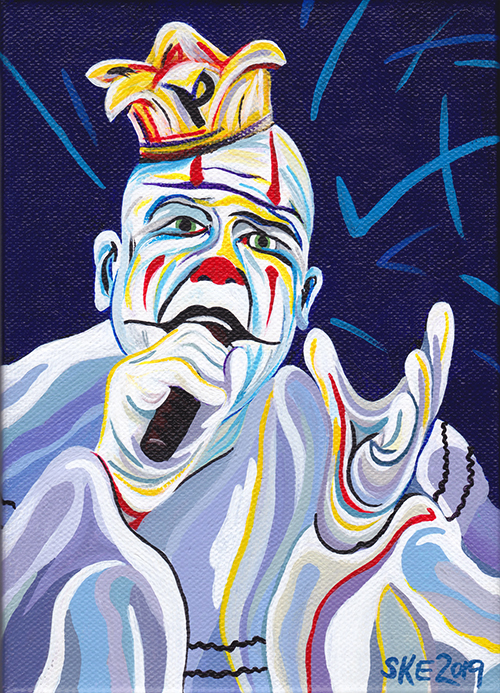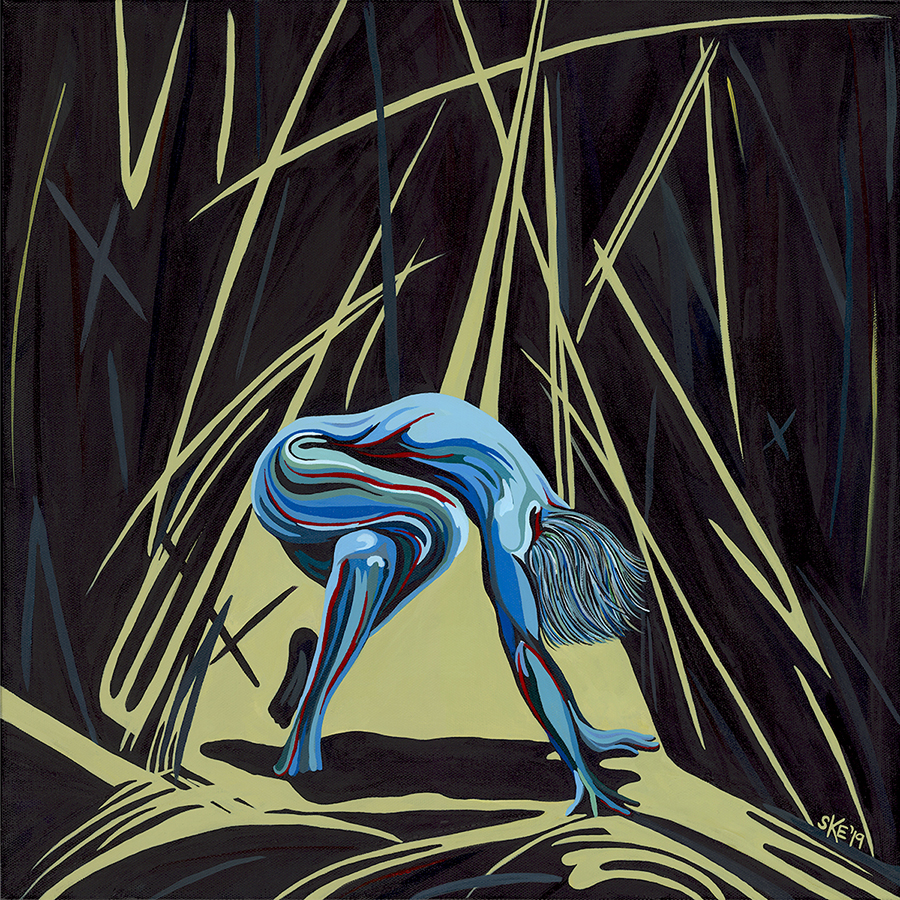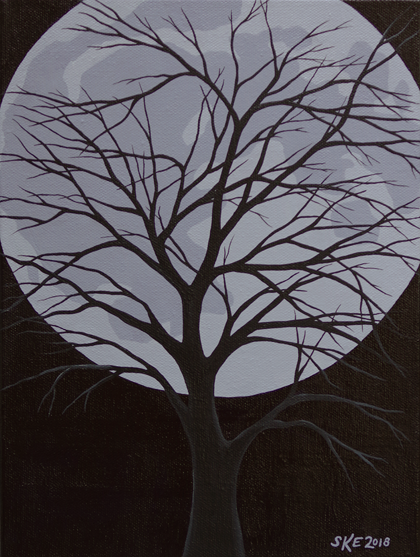Archive for the ‘my art’ tag
Self Portrait, 2020
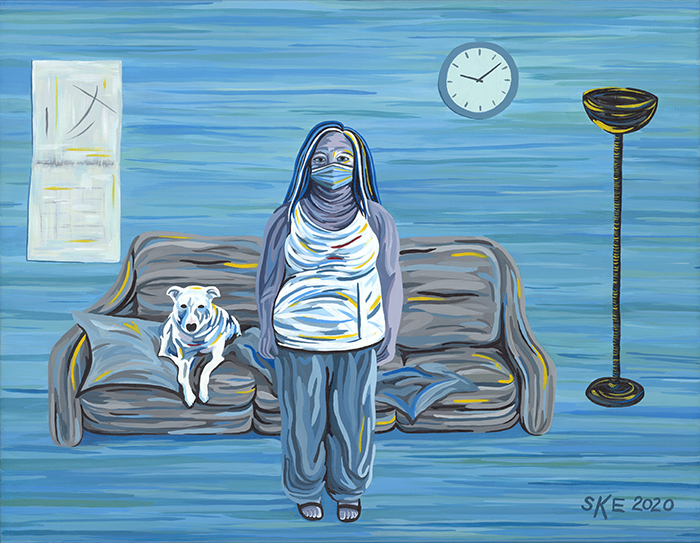
For me, this New Years was about getting this done in time to have a 2020 signature on it. The last year has been different. This was my shot at capturing a little of that.
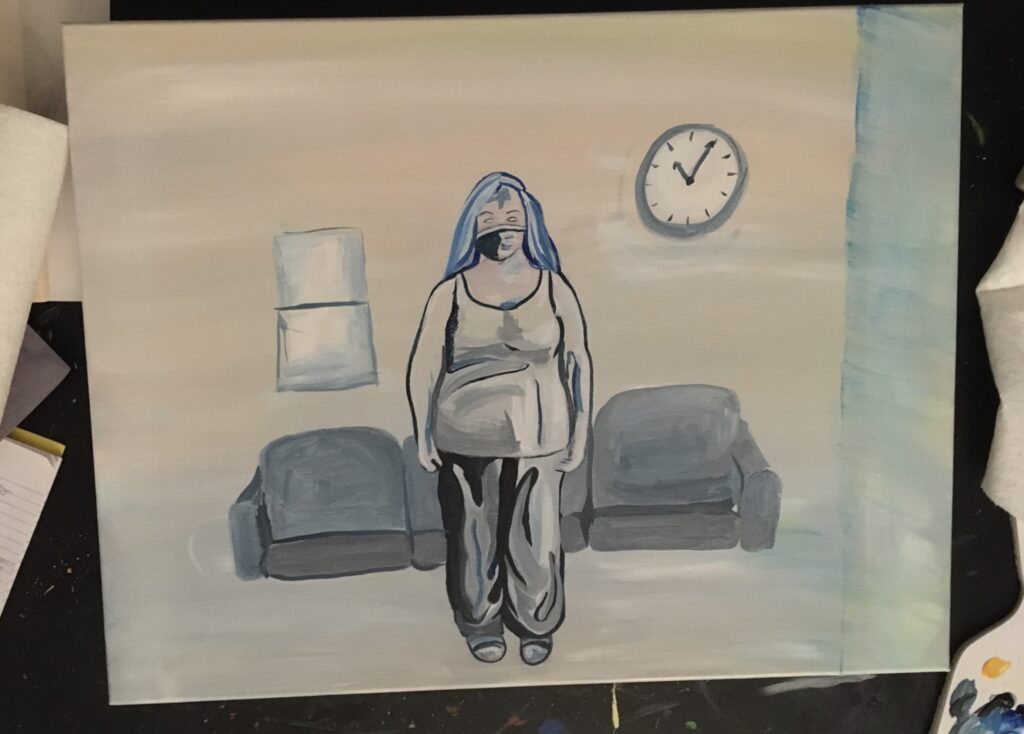
Healing Broken Bone
So, my dog is having an osteotomy today to correct a knee injury, and as I’m looking over the timeline for rehabilitation and recovery, I’m reminded of an old project from grad school. Basically this was intended to be a design for a click through lesson in basic bone healing, but I thought I’d post the old sketches here now. Maybe while I’m watching her, especially these first days, I’ll document and draw something up more specific to what she’s going through.

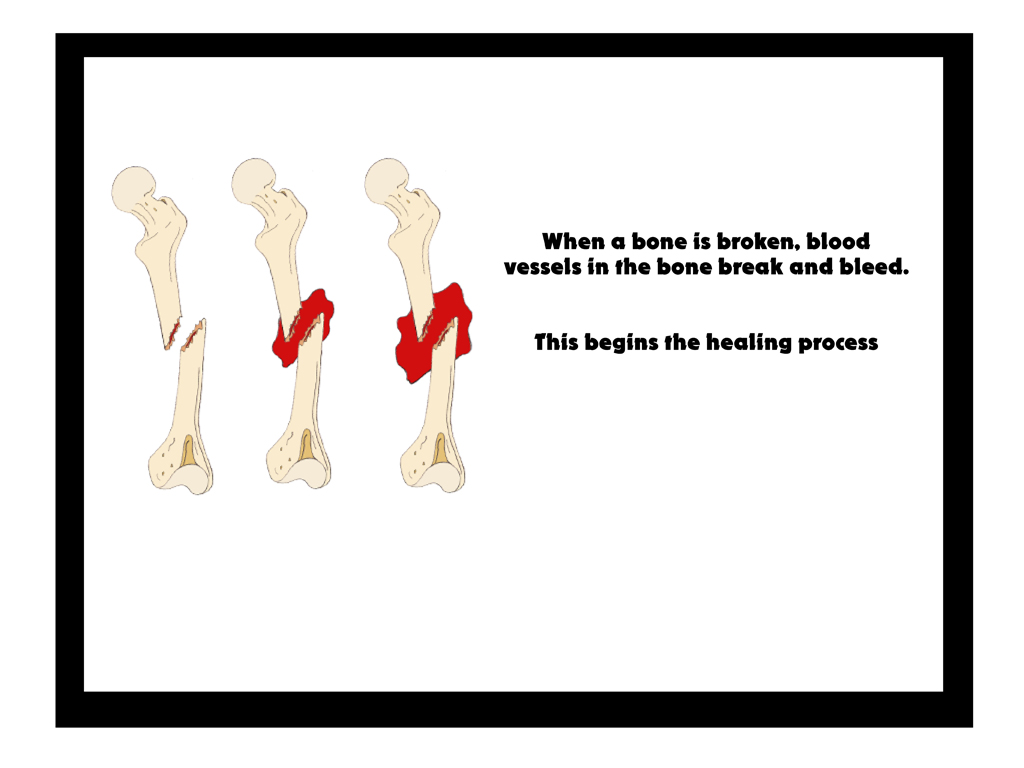
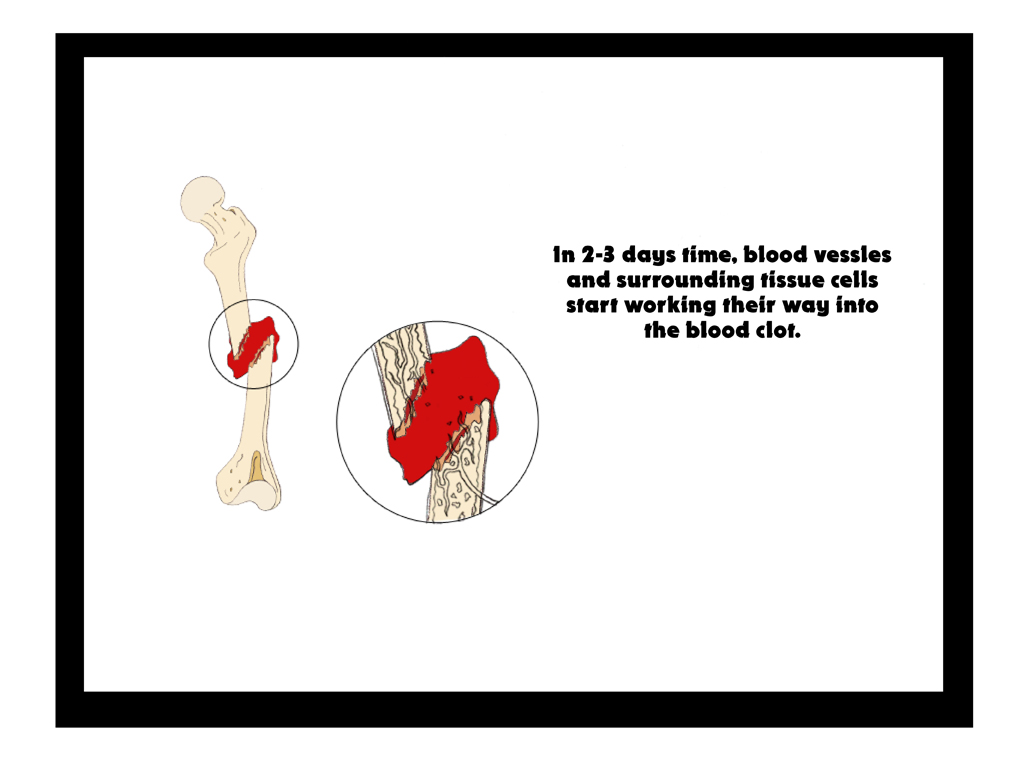
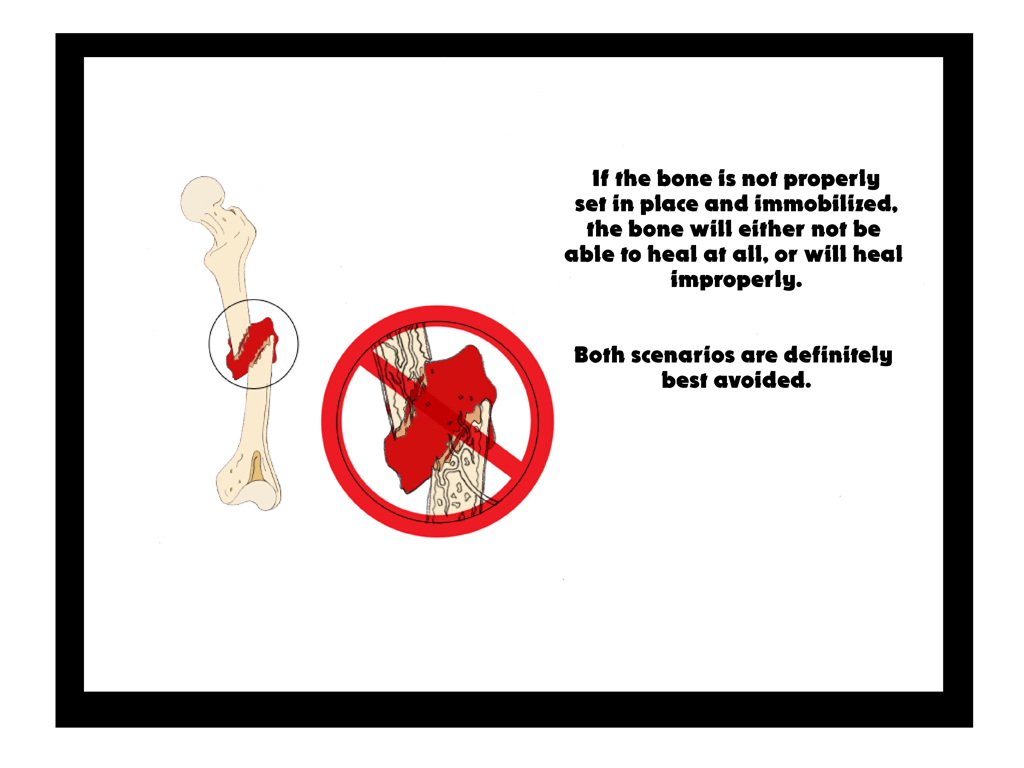
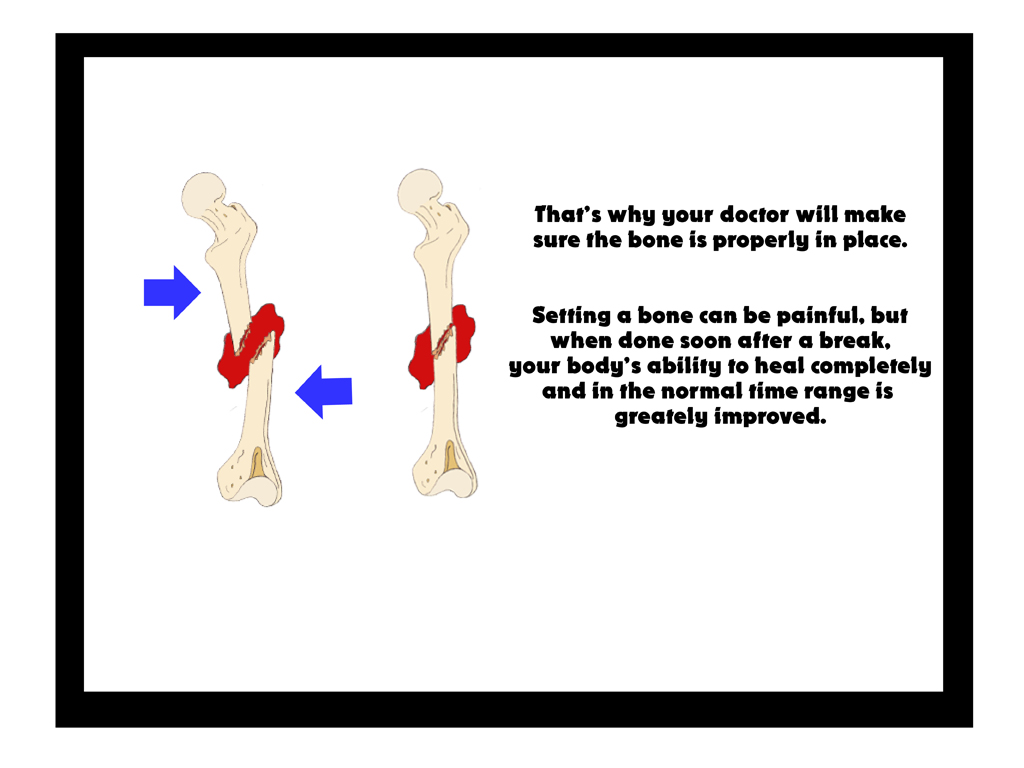

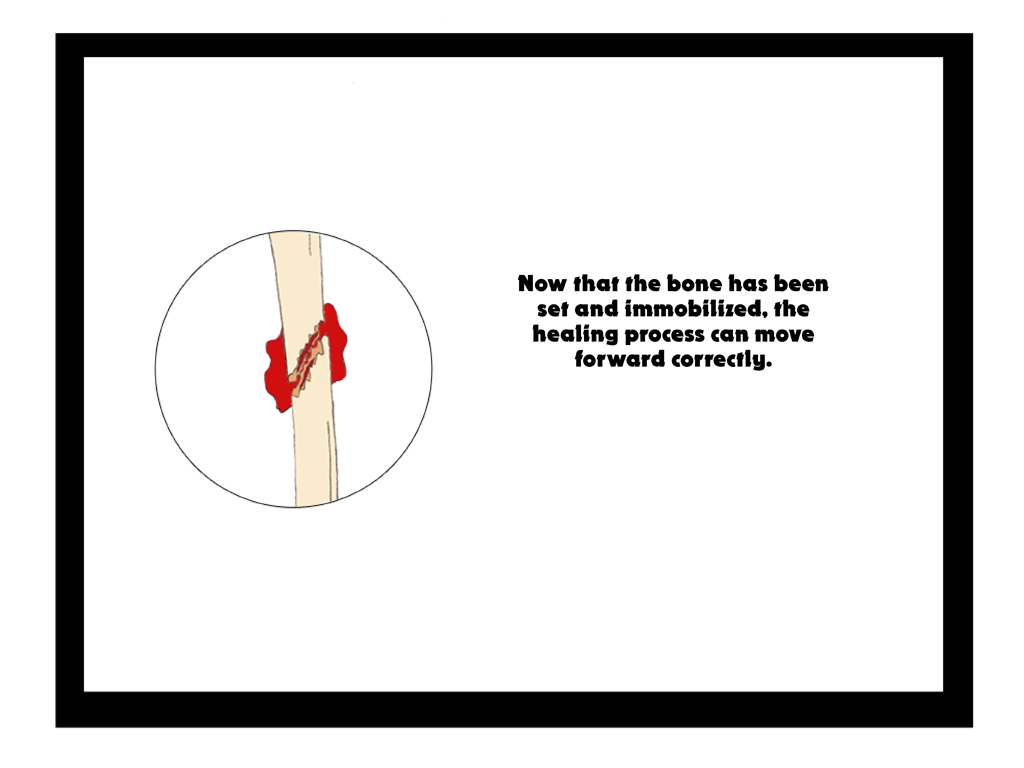
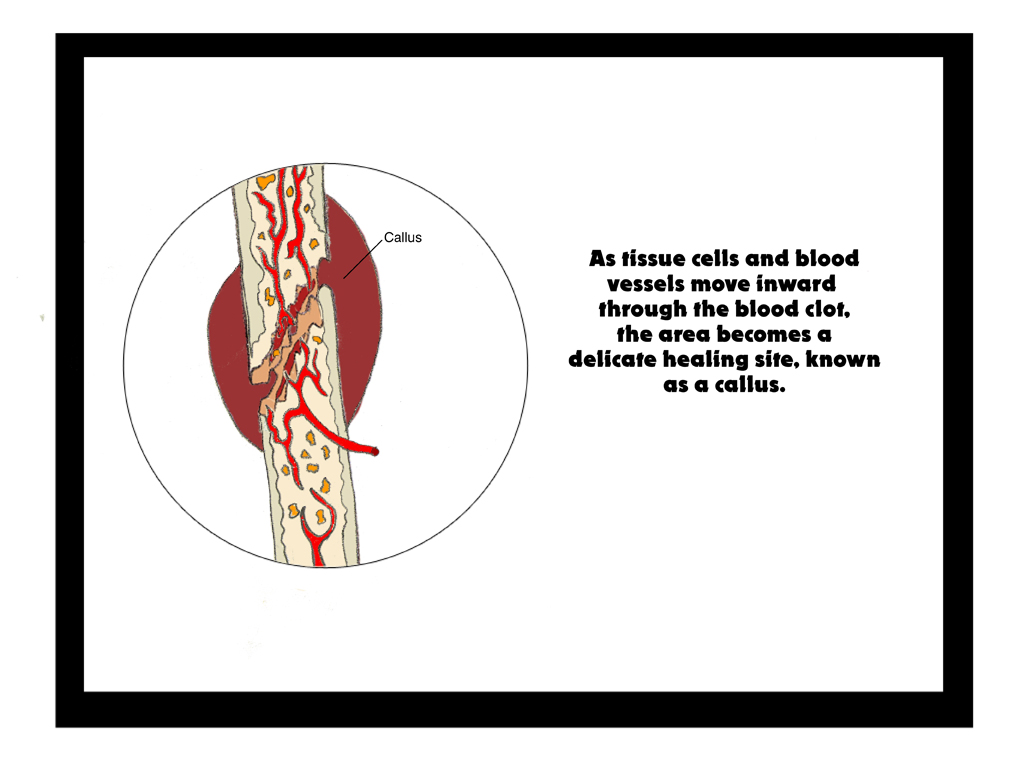
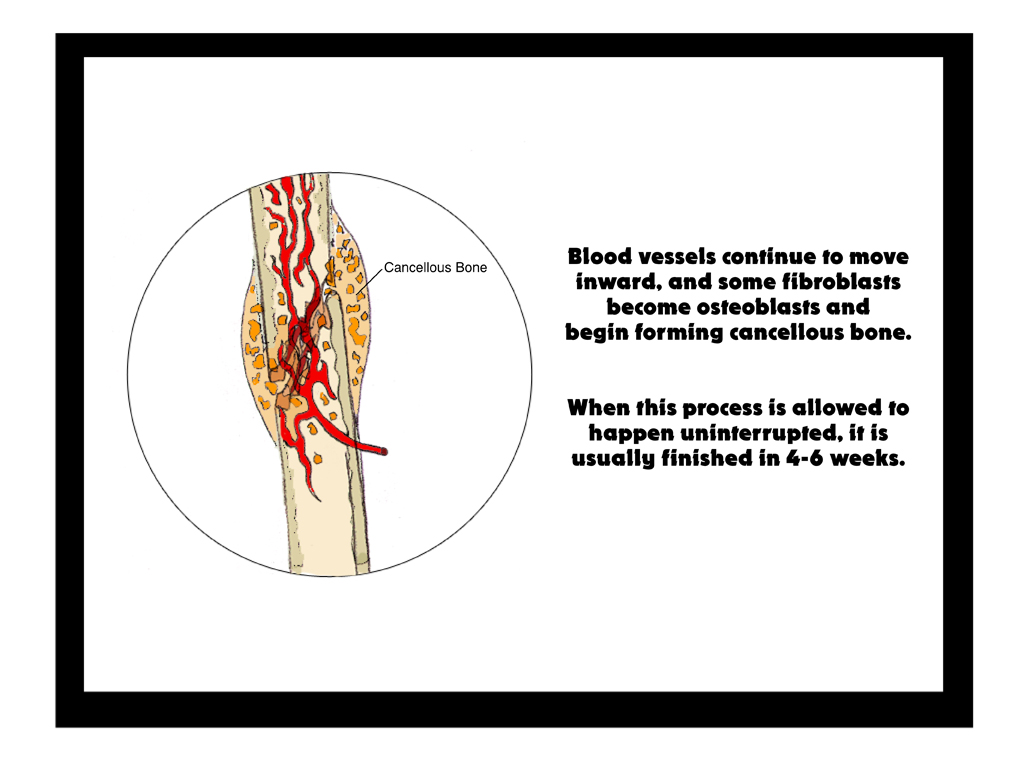

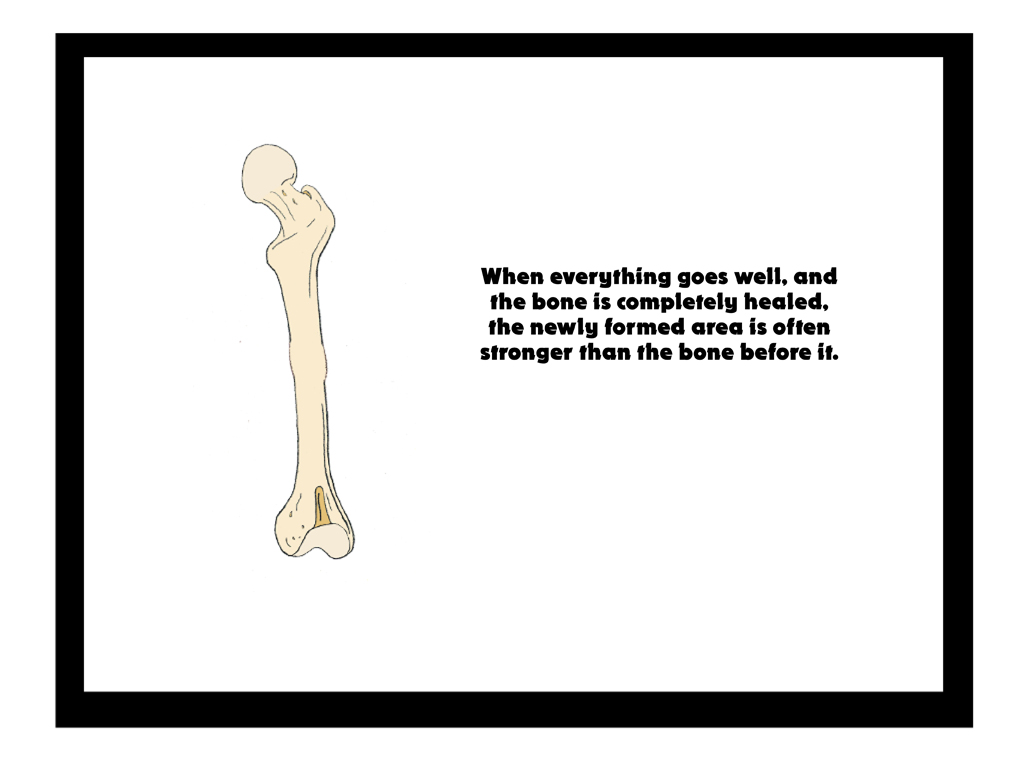
Watching
Recently I finally finished a painting that I have been getting stuck with and coming back to again and again over years now. I’m really happy to finally see it finished.
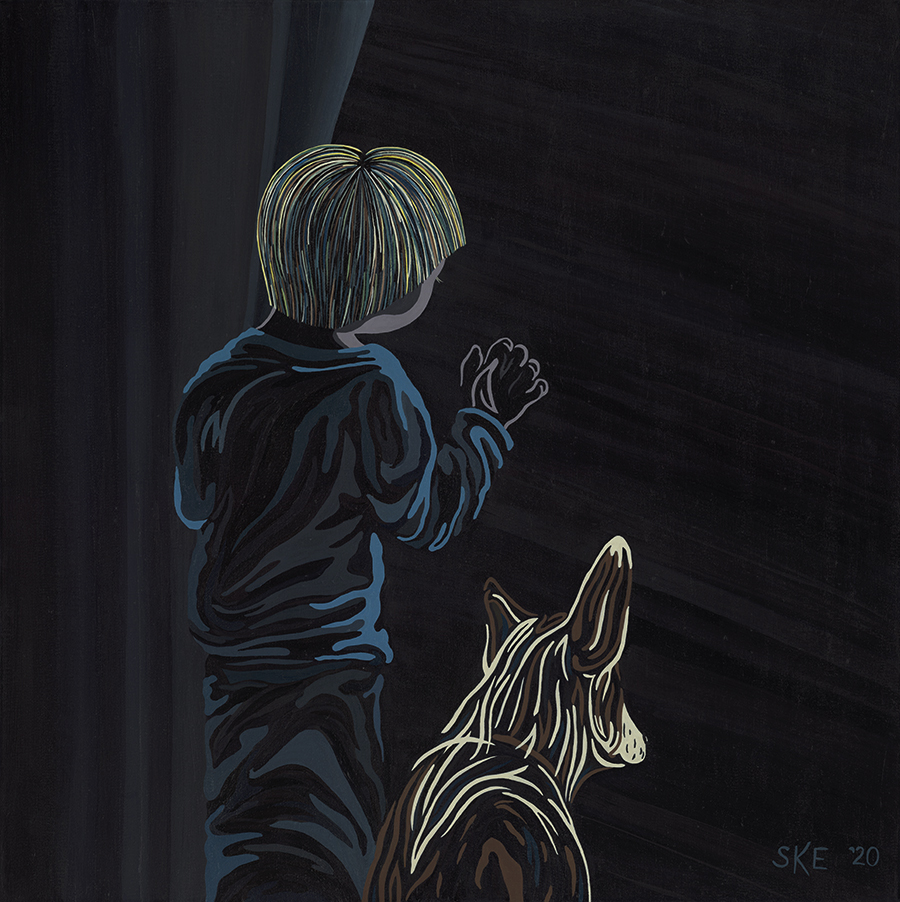
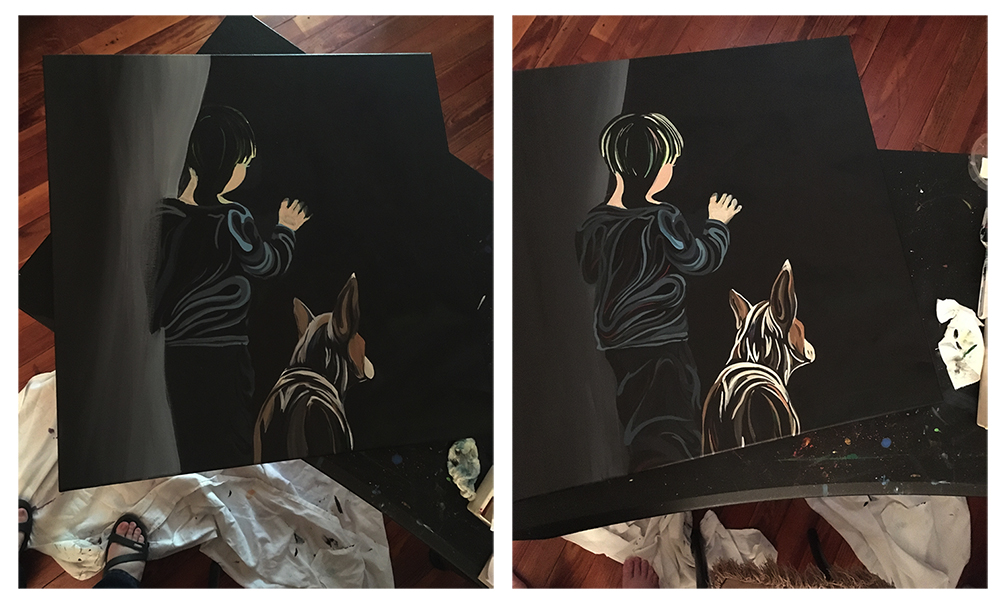
The Ecliptic
For the past year, maybe year and a half now, I’ve been making a lot of these astronomy animations for Macmillan. I really enjoy them. Most of the topics just lend themselves so well to 3D animation. Some of them wind up being really interesting math puzzles, and you even discover very real things just playing with the settings sometimes.
In this particular animation, we wanted to show students the ecliptic, but we wanted to be able to show it to them before introducing the concept of the celestial sphere. Most textbooks reference the celestial sphere in defining the ecliptic, so already we had this complication in how we were going to come at this.
I was also pretty challenged by the idea of how can we come from an out of orbit view into a view within orbit. When I’m building these, I find myself setting up a lot of nulls within nulls within nulls to define different movements (orbit, rotation, angle…) I have found that putting a camera in different levels of these nulls can be really revealing. And in this case, I was able to go from a static camera which shared the exact position of a camera in orbit at a particular frame, so that I could switch from one camera to the next and move from that wider view into a closer view of Earth that follows it’s orbit without breaking continuity.
Fun fact: By putting the camera in a different null earlier on, I actually accidentally stumbled into a nice visualization for the analemma. If your camera is in orbit with the Earth, and always pointed toward the sun, you can see the poles on Earth wobble toward and away from the sun, as the constant angle of the axis faces along the same XYZ coordinate in it’s orbit. But that was a little distracting for this one.
For this one, it made more sense to go with keeping the camera on a fixed side of Earth and letting the light appear to orbit around it, even though it was actually the Earth and camera in a null orbiting the light the whole time. This wound up being perfect for showing that transition from a heliocentric view to a geocentric one. The illusion was already there. And setting up a mini sun in perfect sync was easy enough.
And then, because we wanted to reference the background stars, and the zodiac constellations are literally the constellations along the ecliptic, we got to pull that in as well. We used the spring zodiac constellations, and at first I messed this up, but when the south pole is oriented toward the sun, that’s our winter, and when the north pole is oriented toward the sun, that’s our summer, and you can see in this view that we are moving from winter to summer, so the sun would be passing through Aquarius, Pisces, and Aries.
I get better at these, the more of them that we do. So much of astronomy just comes down to objects in motion, at vast distances, and how things look differently from different perspectives. It’s a fun subject, and so well suited to 3D animation.
Recent Works in Paint
My goodness, it looks like I haven’t updated here for a couple of paintings now. Well, just now, I finished the 2nd celebrity likeness I’ve ever done. There is a sad clown with a golden voice, named Puddles, who throws pity parties, and he’s wonderful. So before going to see him last week, I decided to make a tiny little painting of him and give it to him at the show. This one took me a few weeks I guess. I started with the basic lines, and then got to playing with it, and finally had to cut myself off so that I could give it to him. It was actually really refreshing making a gift this time. Sometimes I really like doing things like that.
 And ultimately, I came out with this…
And ultimately, I came out with this…
And then prior to that, I finally finished a piece that I had been working on for months. This one was called Forces. It is a bigger canvas, and I had to play with it a lot to get things right. I like how it ultimately turned out though.
Tree #11
I finally finished the new tree painting. This one has been a bit of a wish for fall as we get through the final slog of all this over 100º weather.
The Moon’s Formation
Today I finally got the go ahead to share one of the astronomy animations of late. It looks like we may change something about the sun on the first one, but this one is staying as is. This was definitely the crazier of the two to work on so far. I don’t really ever get requests to crash things when I’m making bio animations. So I did a few tests in advance of taking this one on, where I discovered the Voroni Fracture, which is super fun, especially when combined with the push-apart and random effectors. Unfortunately, by the time we got the textures fully set and introduced a molten core, every scene that used Voroni fractures wound up taking forever to render. There are spots where I would have liked to do it a few more times to finesse some of that stray space debris and get it just so. But overall, I learned a lot working on this, and it was fun to try something different.
It’s been a while since I’ve been able to post anything fun from work on YouTube. For a while there, most of my animation work was either going into larger interactives and needed that context to make sense, or was really small, and again best within the context it was being made for.
I’m looking forward to doing more of these. And when we get things settled with that first one I’d like to show it off too. It’s less smash and more elegant. I think it’ll give viewers a good aha moment, and well, that’s my favorite part of working on things like this. Well, that and the part where the details of my job involve all kinds of cool scientific knowledge. Really, prior to making this, I don’t believe I’d ever heard this explanation for how our moon formed.
Oh, and I can’t forget to mention this awesome find for textures. I only used them a little in this animation, but I’ve gotten good use out of the textures that are freely available from Solar System Scope. It’s a lot like taking them directly from NASA, only these folks have already done the work of taking NASA’s telescope images and stitching them together to make a perfect texture for application to a sphere in whatever 3D program you might be using. It’s really made working on these kinds of images nice. So big thanks to them, and obviously to NASA.
With
Nephron Anatomy
I recently had an assignment to create a nephron illustration. I’ve illustrated nephrons before, and I even thought I’d be able to re-use some of my old work. But it turns out, all of my previous work with nephrons was at a more introductory level. I have to say, I was downright disappointed. Because science gets complicated, and anatomy in particular, there are a lot of times when models are simplified for clarity, but it really bothers me when I feel like students are actively mislead.
The first time I ever illustrated a nephron was in grad school. I did it for my pen and ink assignment, and was really happy with how it turned out.

Then not long after I started with Sapling Learning, I wound up illustrating a nephron in Photoshop.
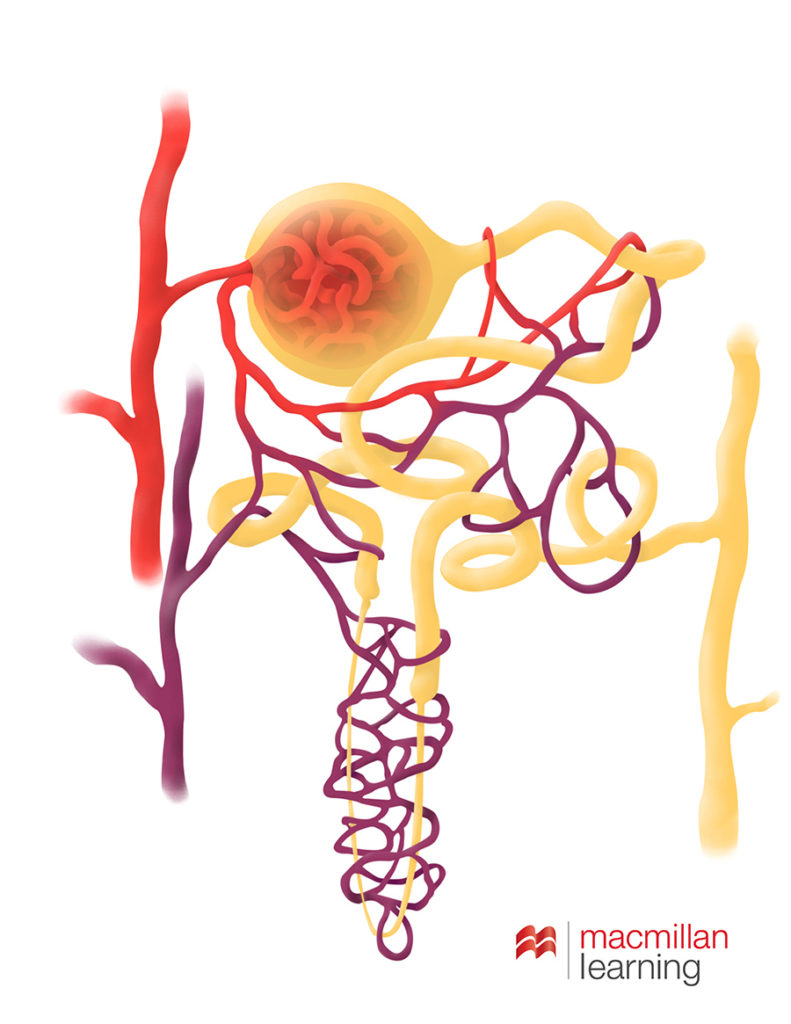
We even used arrows with this one at one point to show flow. And I looked at a lot of images throughout making both of these images. But not until a more advanced illustration request came up, did I ever realize that the distal tube of the nephron always passes by the opening of the capsule between the efferent and afferent arterioles. There’s actually an important feedback process that happens there where the contents of the tubule affect dilation and therefore the rate of filtration happening.
If you look up the juxtaglomerular apparatus you can find a lot of references at this level. That one detail of form is an important part of how nephrons work. So it bothers me that it’s so widely agreed not to feature it in more introductory images. They do that for clarity, but I think it’s too important and really I’m not sure that it actually adds all that much more complexity. So this is my most recent nephron artwork. It’s not my prettiest version, but it does tell more of the story. If we’d had more time, we probably would have done more with the form of the podocytes. They really weren’t the point of the illustration though, so we settled for at least giving them a nod. This was more about showing the layout of the cells between where the distal tubule passes between those in and outgoing arterioles to allow for the signal exchange about how much filtration is needed and for flow to be appropriately affected via dilation.

So now I’m hoping that moving forward, I can always use that simple design change in representing nephrons so that when students get to this part, it’s not so jarring. Maybe a lot of students don’t get stuck on details like that, but I know that I always have, and I know that I’m not the only one.
Head and Neck with Jasmine
I recently got a chance to put a friend’s face in some anatomy work. Sometime back the lovely Jasmine Harris let me photograph her face at Macmillan and I recently had the opportunity to pull it up for an AP illustration. I used the Zygote model for much of the internal anatomy and made some adjustments to both fit Jasmine’s head and neck more appropriately and also to improve the accuracy for the cutplane view.
